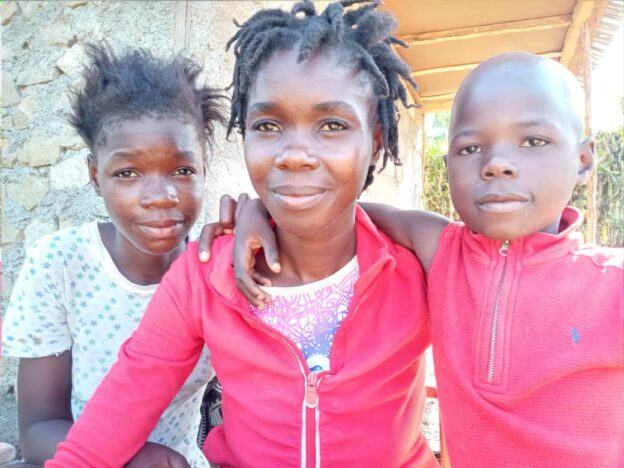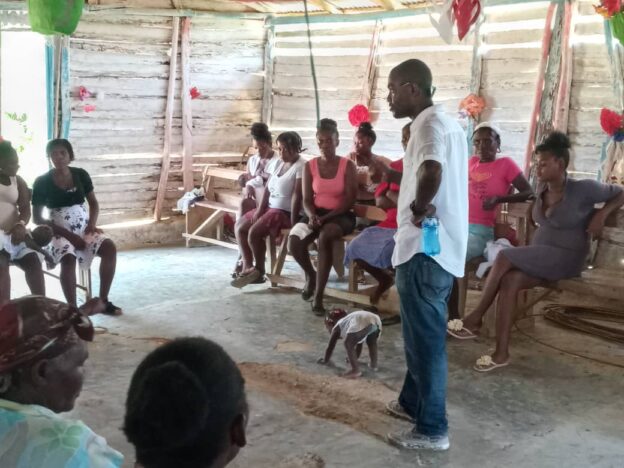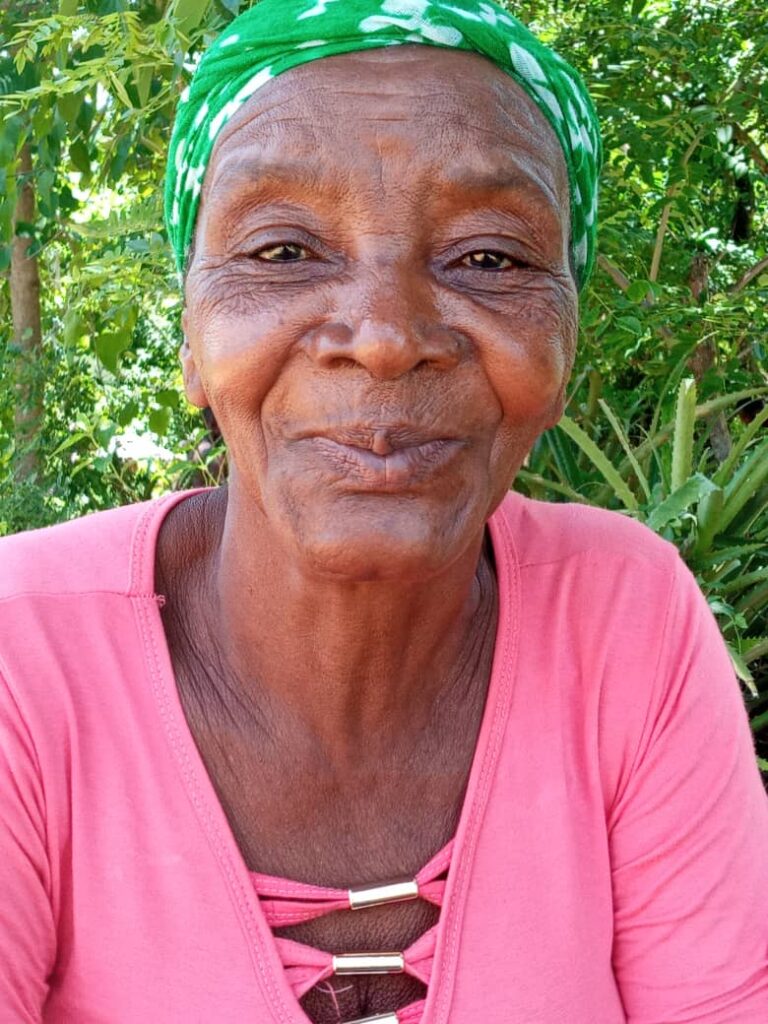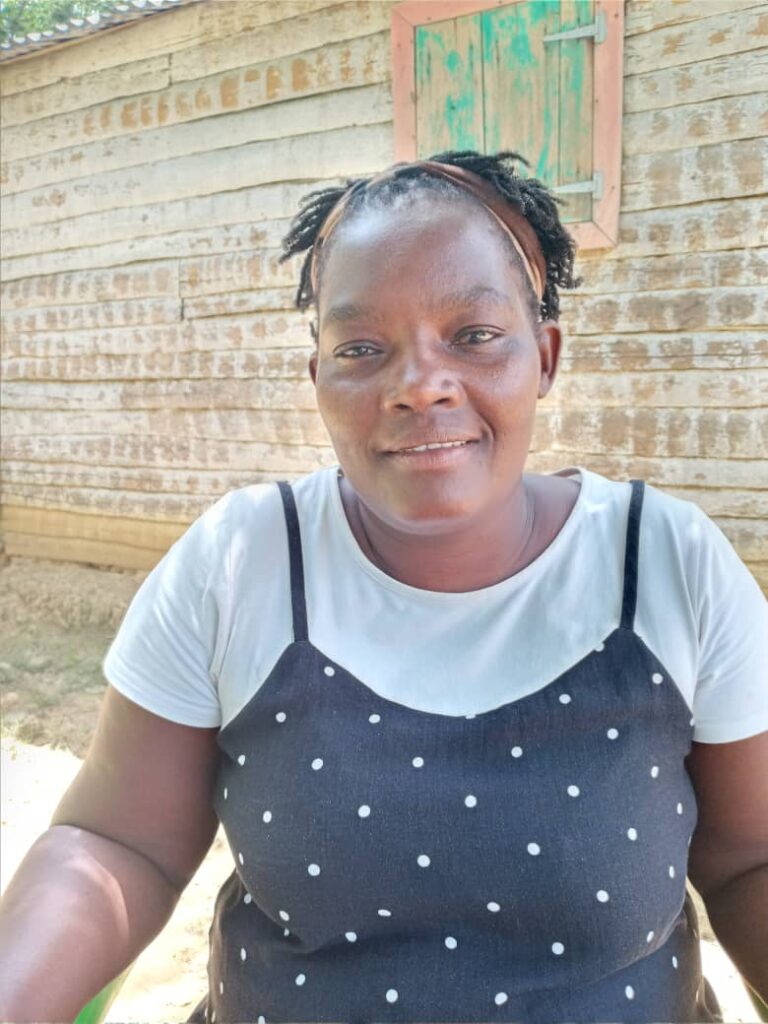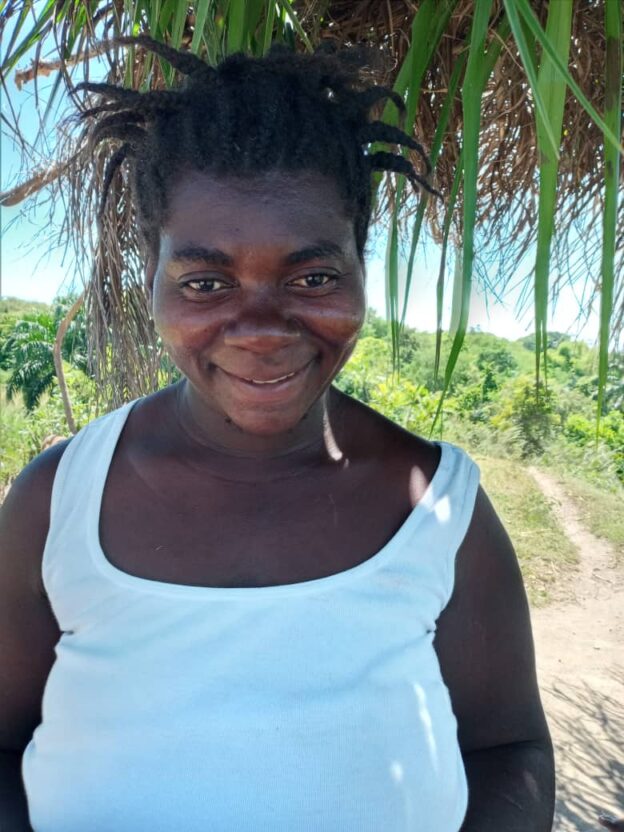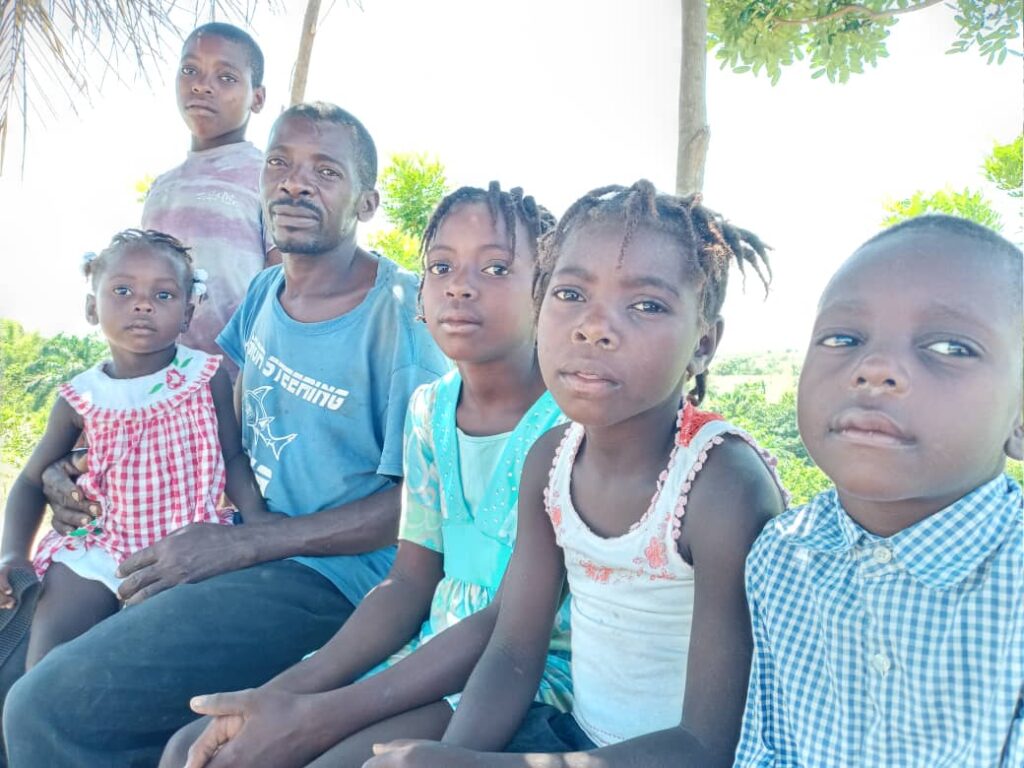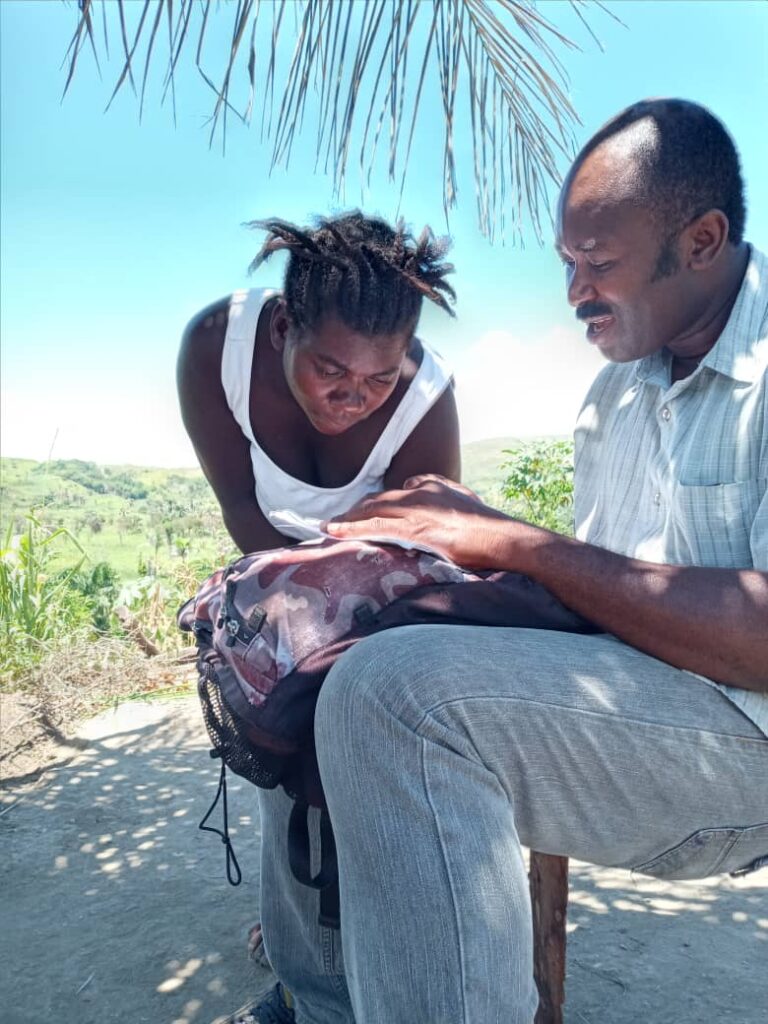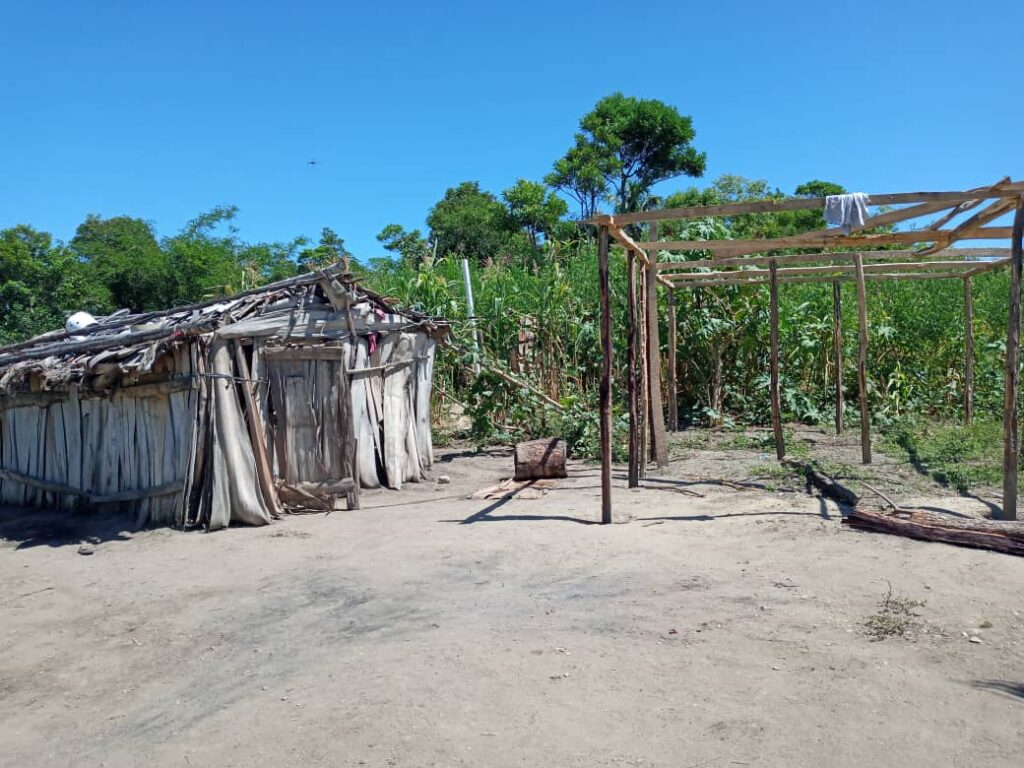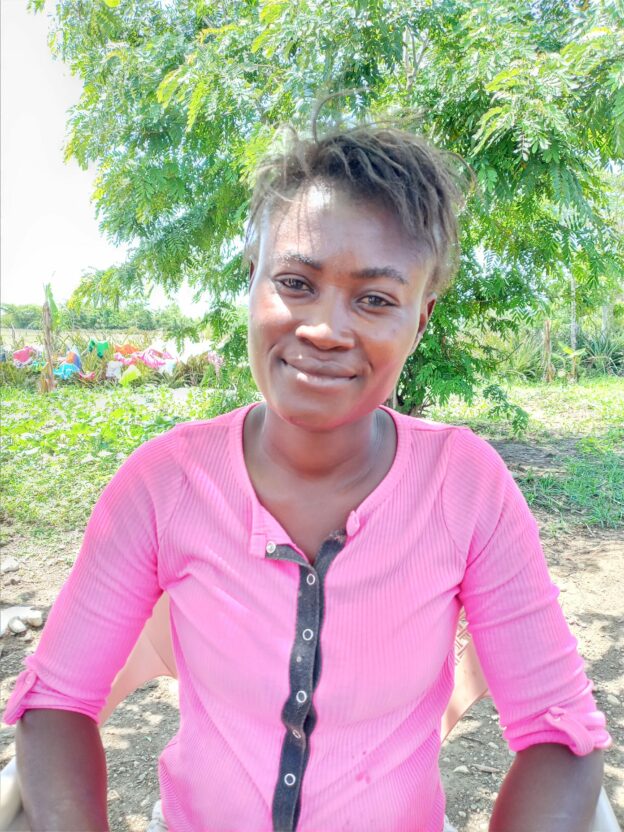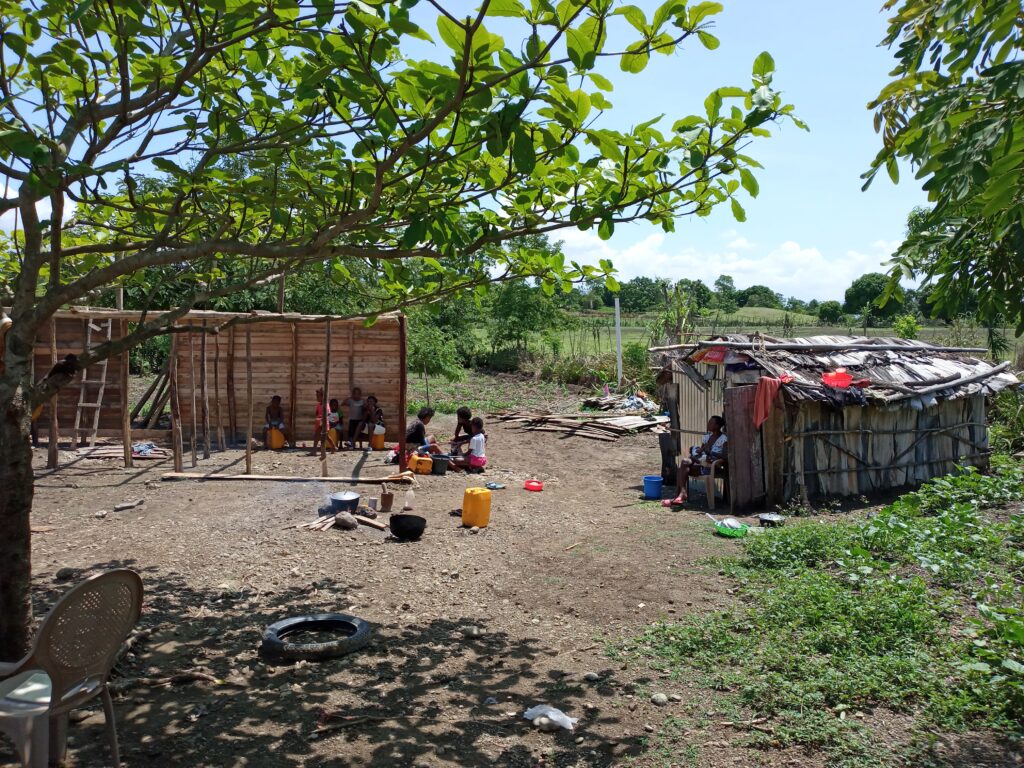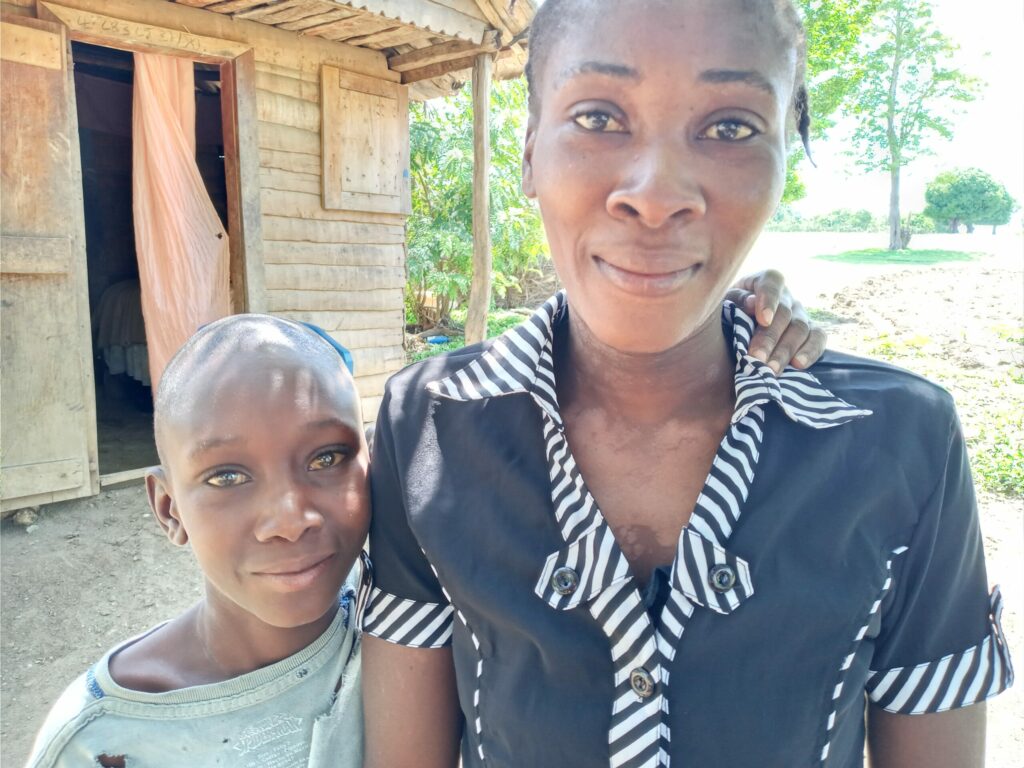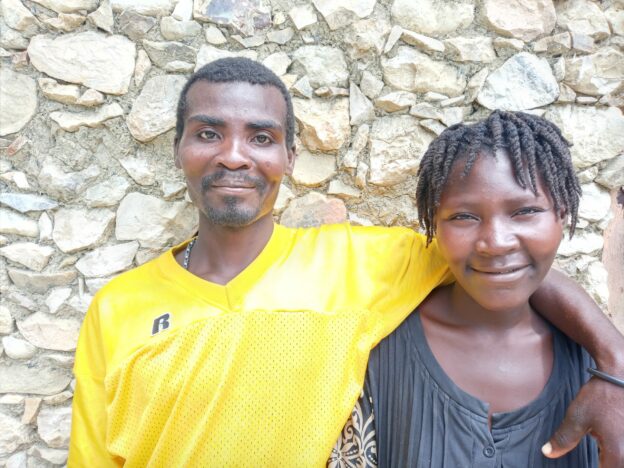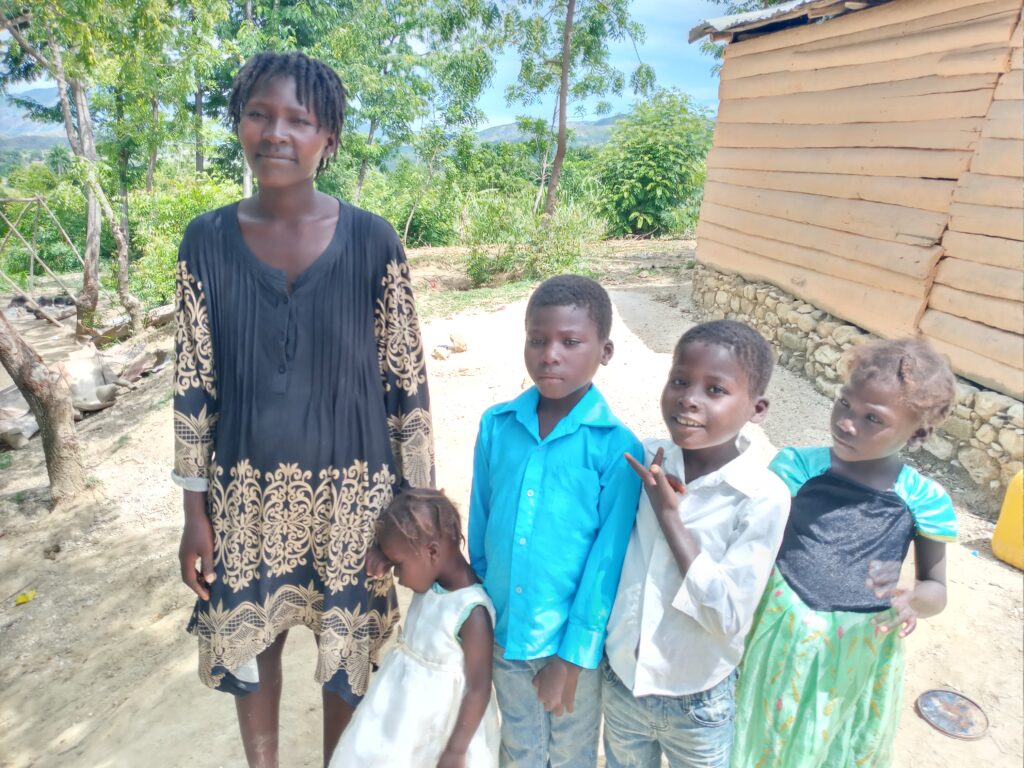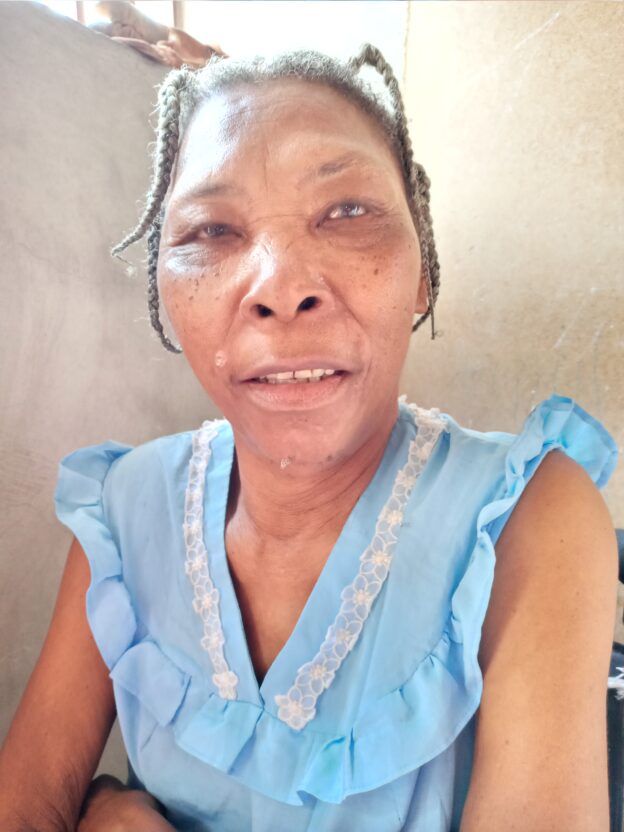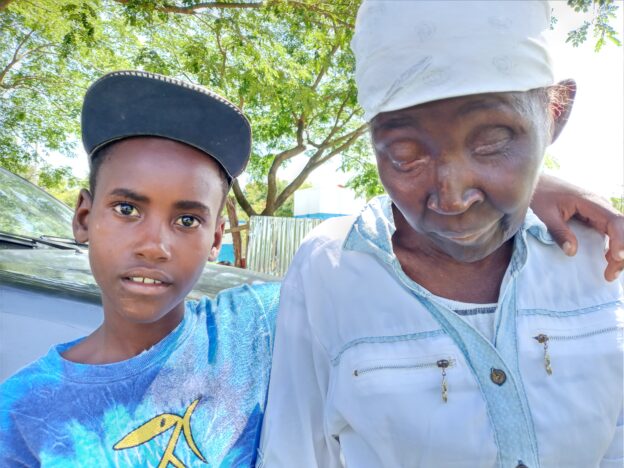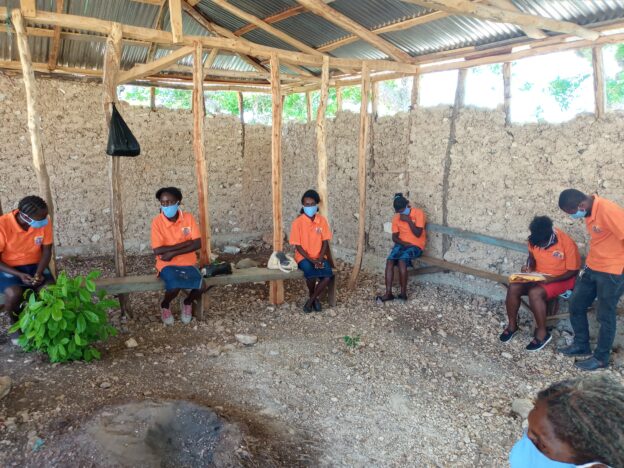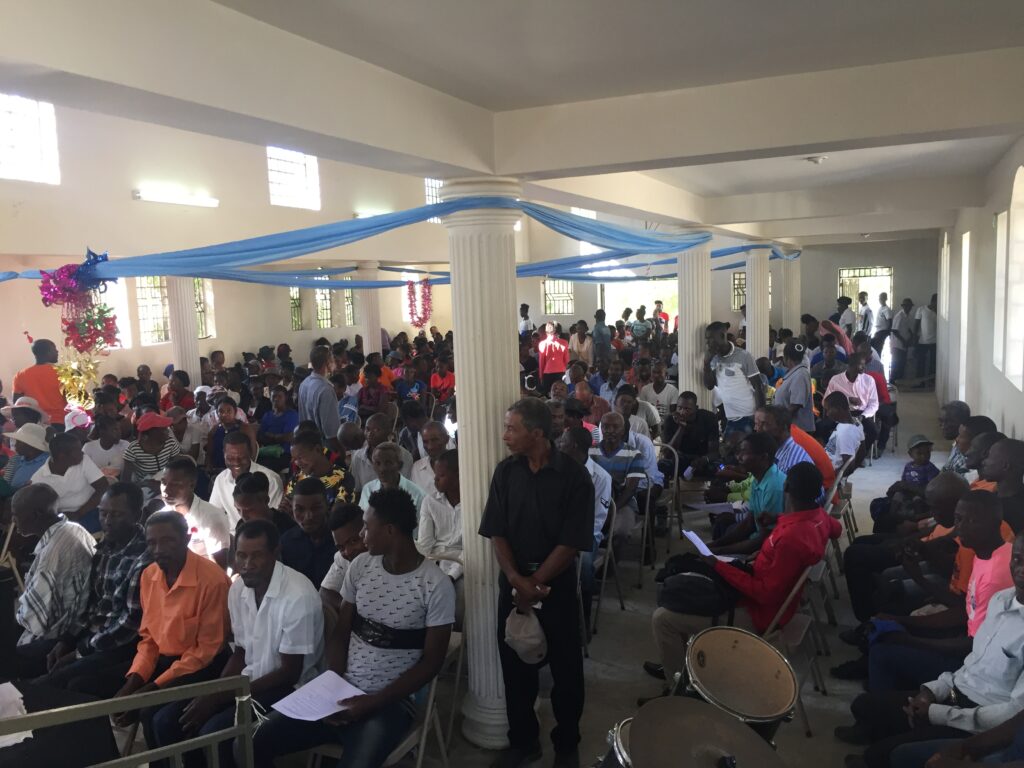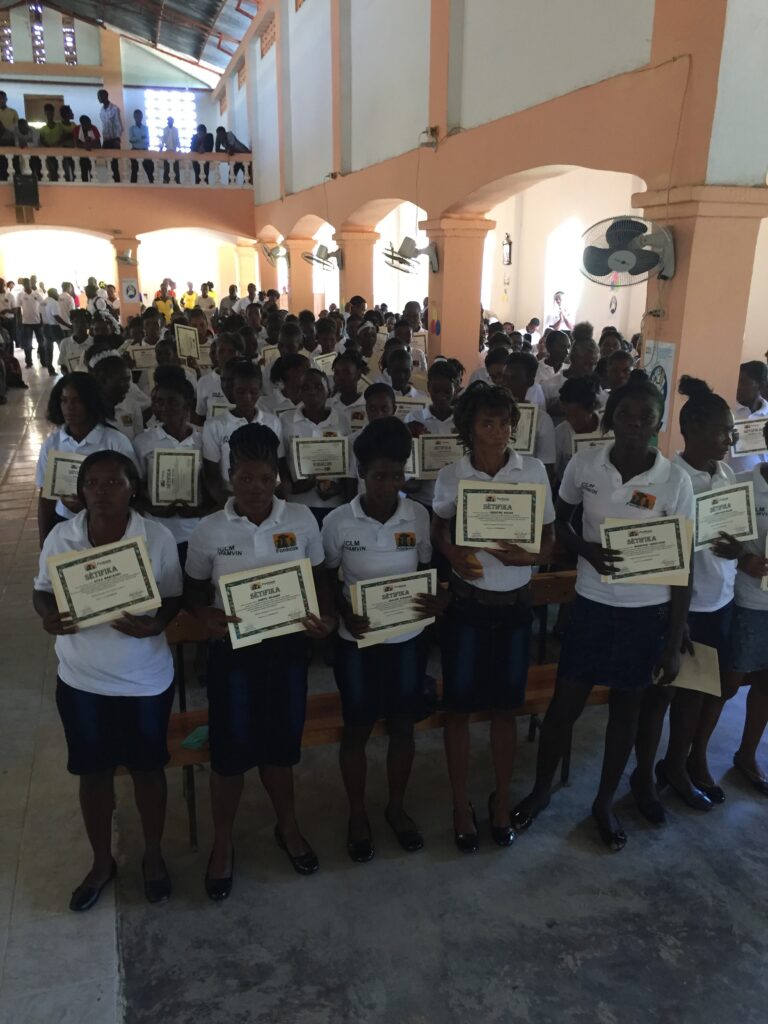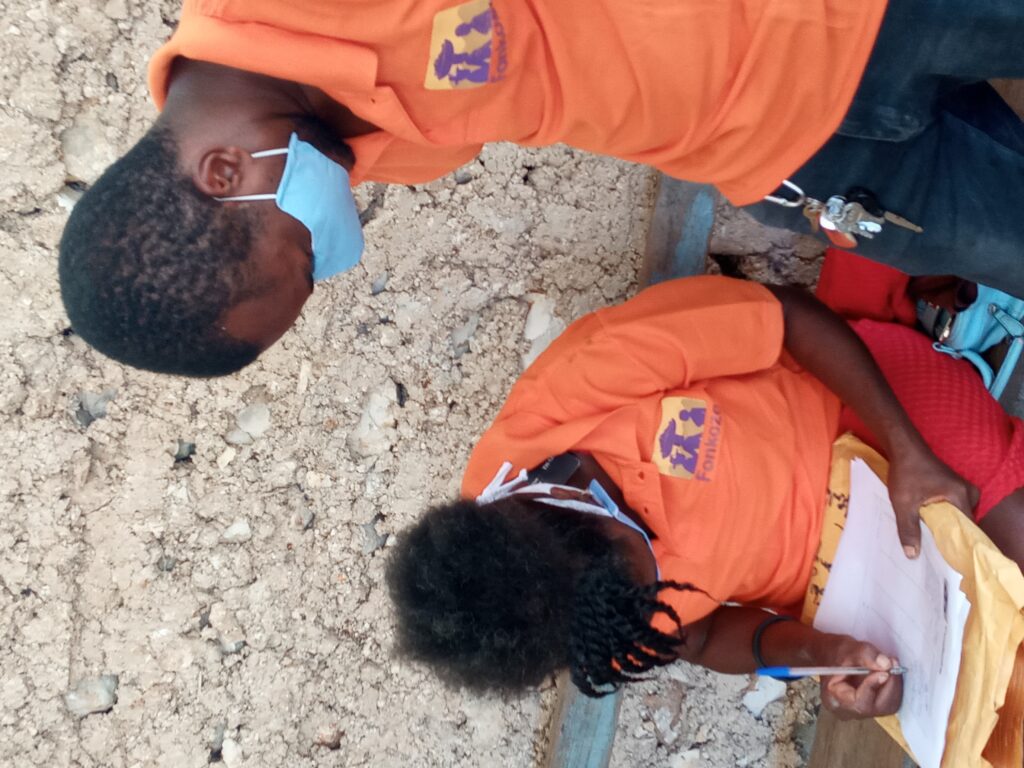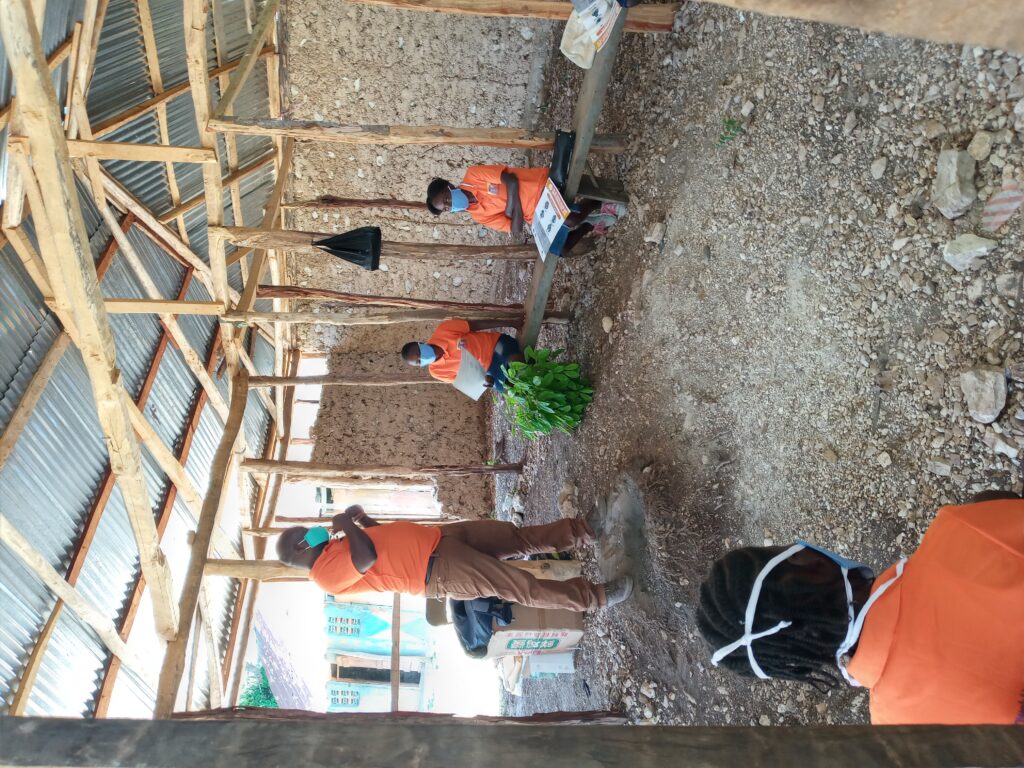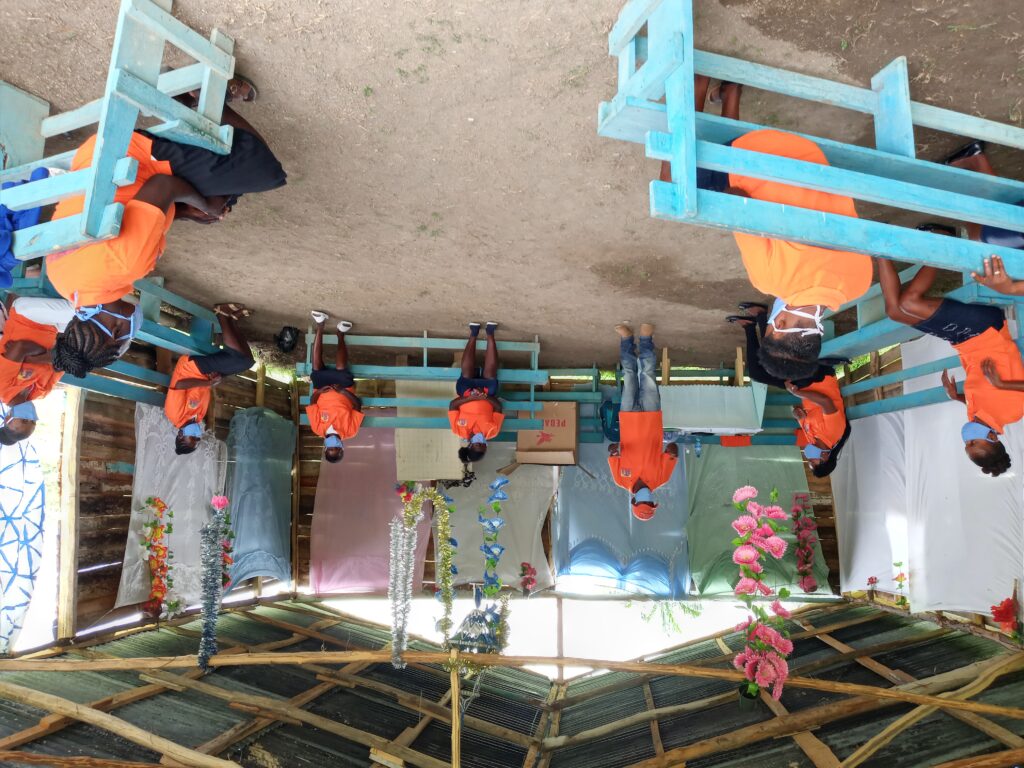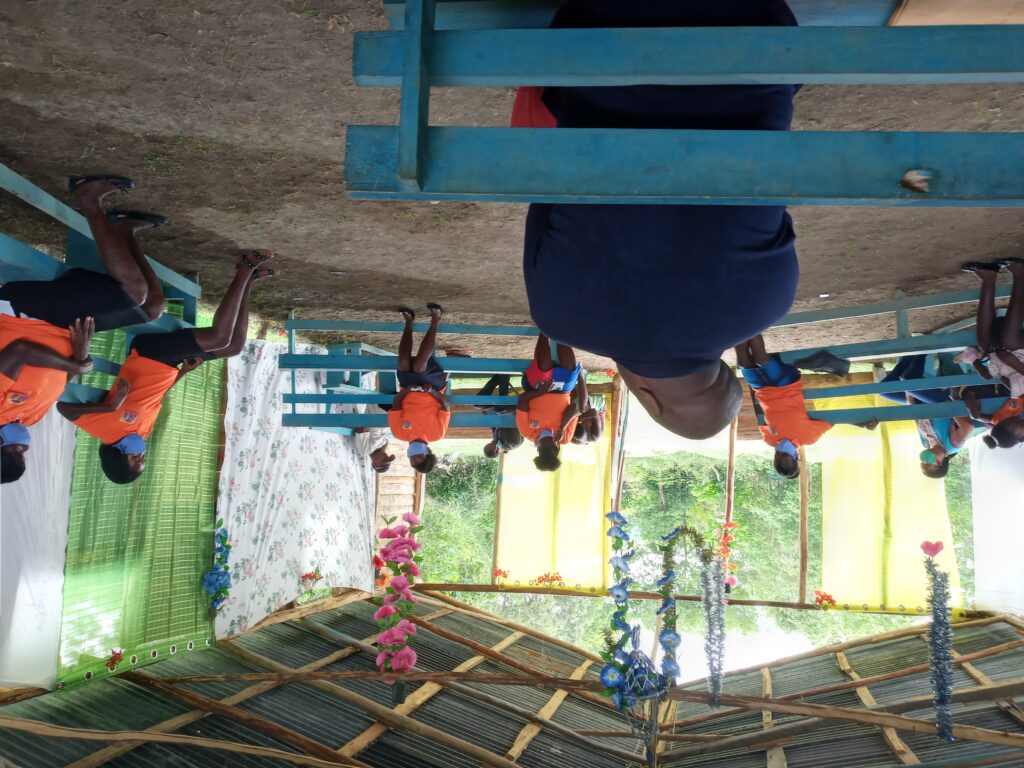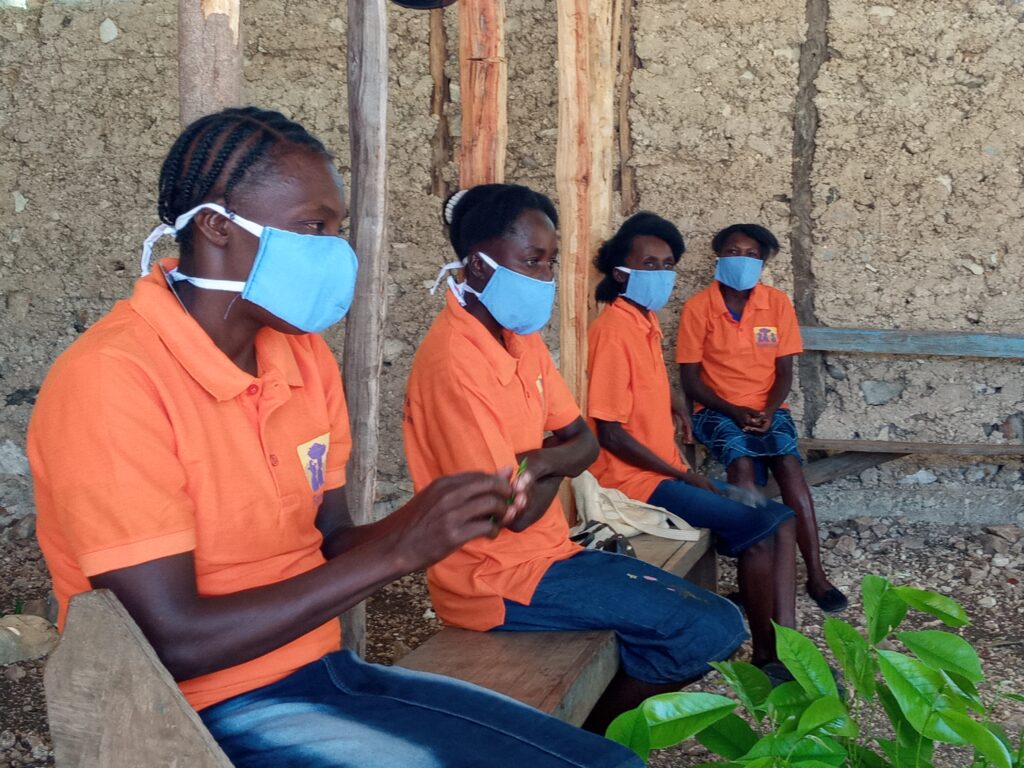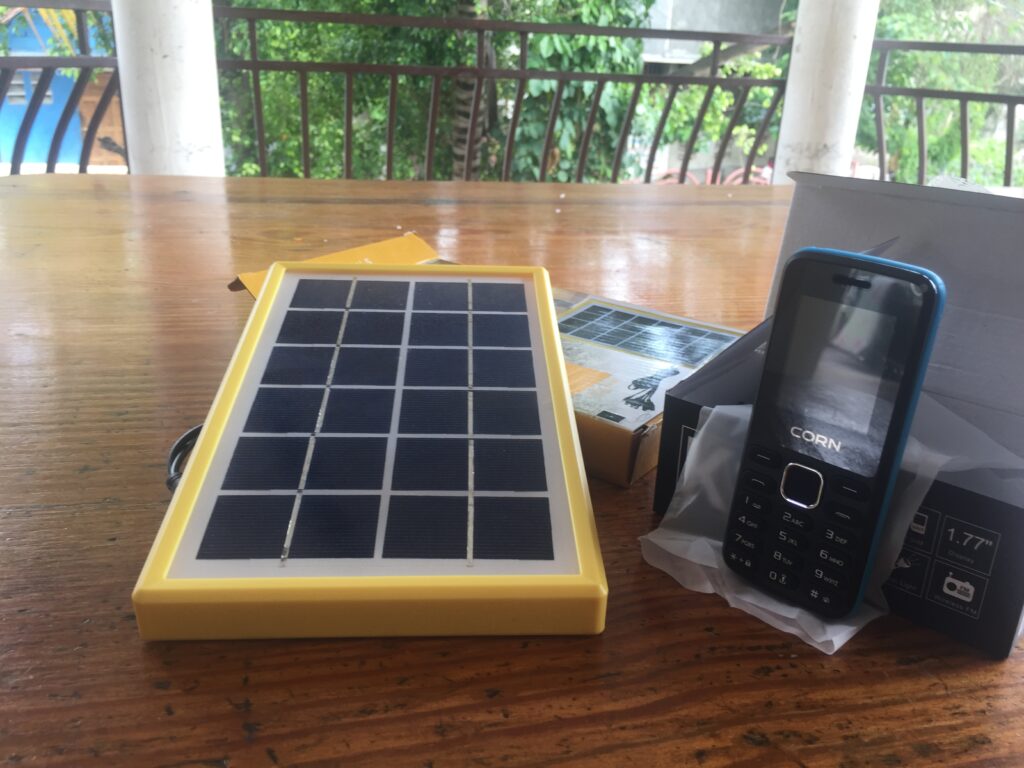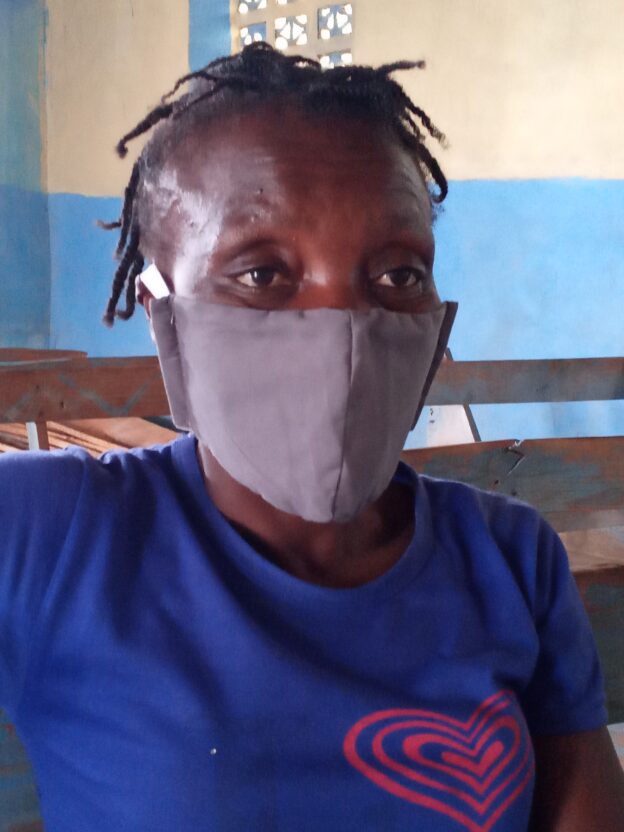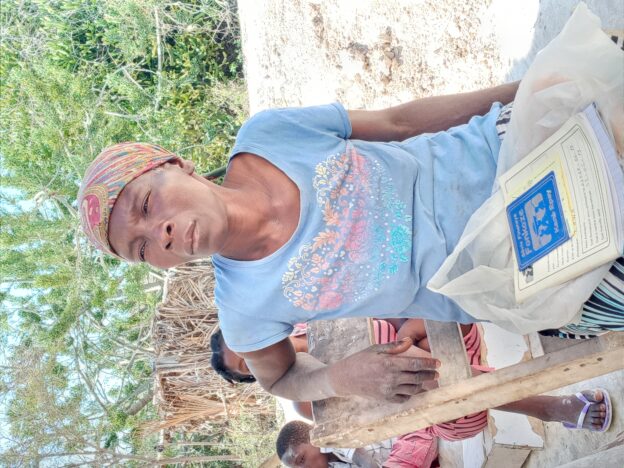Leodile Marcelin is a 31-year-old mother of three. She lives in Kanifis, a wide area of northern Gwomòn. Each of her children has a different father, and she’s not together with any of the men. Two of the three live with her, but the third lives in Leyogann, halfway across Haiti from Leodile’s home. “I was having trouble taking care of the kids, so his father took our child and sent her away to live with his sister.”
When she joined the CLM program, she was really struggling. She had finally given up a business buying produce by the sack and selling it in smaller quantities because she spent all of her business capital trying to take care of her health. “I had been sick for a long time. I kept going to healers, spending money wherever I heard there was good treatment, but nothing helped.” The word she used for “healers,” “papa ti chèz,” or “little-chair-fathers,” is a way to indicate practitioners of vodoun. It plays off of the tendency of many to sit on low stools when they practice.
Without her own income, she came to depend on a man, but not the father of any of her children. He made money as a motorcycle driver, bringing some of his earnings to her. He also rented a room for her to live in.
But he wasn’t faithful. Leodile says that he was with a lot of women, so she decided to move out. Without her own place, she and her kids could only move into a family member’s home. That situation might have worked out, but the earthquake that struck Gwomòn in 2018 leveled the house she was living in. She then moved in with another family member, but it wasn’t a good situation. She was constantly feeling humiliated. “They made a big deal if I made food for my kids, and they laughed at me when I had nothing to give the kids, too.”
She joined the program, and chose goats and a sheep as her assets. Her livestock developed slowly because Kanifis was in the midst of a long drought when she received them, but both the sheep and one of the goats eventually produced young, and both are once again pregnant. Leodile wants to sell the other goat and buy another. “It has been mounted by a buck a couple of times and nothing happened.”
She eventually found a place to build her home. Her cousin Estelia is an older women who has a house on family land. She saw the difficulties that Leodile was facing, and she offered her a corner of her yard to build her house on. One of Estelia’s daughters had a home on the plot as well, and she was also willing to have Leodile join them. “They are really good people,” Leodile explains.
Leodile used money from her stipend to restart her business, but it didn’t last. She spent the business capital to start construction of her new home.
But then she ran into a problem. Estelia’s grown son, a man who lives in Pòtoprens, contacted her, ordering her to take down the home she had started to build. He was unwilling to have her on the land. And his word meant a lot. Estelia depends on him entirely. Though the land is more hers than his, his financial importance makes him the power in the family. Estelia had no choice but to stop building.
When the CLM learned about her problem, they went with her to talk to the local Village Committee. The program sets up these committees of local volunteers to support the program and its members in various. Leodile went with the program’s Gwomòn supervisor, Gissaint, to speak with the committee’s president, Cétoute. As the principal of the local primary school, he is widely respected. He listened to the situation and agreed to talk to the man in Pòtoprens. It wasn’t long before than man had changed his mind. Once he really understood the situation, he said he’d be happy to have Leodile build on their land. He let her know that by phone, and when he next visited his mother, he made certain to see her personally.
So Leodile was able to get back to work. She is now almost finished. She’s behind most of the 200 families who joined the program with her, but she’s confident she’ll be able to finish in time to graduate in November. Her partner moved in for a while, and that helped with expenses, but when she saw that he was still seeing other women, too, she kicked him out.
But she’s got a long road ahead of her otherwise. She is in debt to two local savings group. She took out the first loan to help her then-partner pay the owner of his motorcycle when political unrest decreased his income so much that he was unable to pay. She borrowed from a second savings group to buy the building materials she needs to complete her home. “One thing’s for sure, I won’t ever leave my savings group. When I think of what it help me do!”
But with two debts and only, for the time being, the barest trace of an income, she has some problem-solving ahead of her. For the time being, she depends on friends who lend her small amounts that she uses to buy little bits of merchandise. She sells quickly, and repays the money right away. The CLM team knows her former partner and has a good relationship with him, and we hope to make him recognize that that debt is really his. The leaders of the savings group have agreed to show special patience. But she will, at the very least, have to find the money to pay 5400 gourds plus interest and penalties on her second loan.
It might make sense for her to sell an animal to do so, especially if it leaves her with a little something to restart her business with as well. That’s something that she and her case manager will need to work out.
